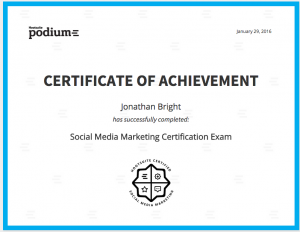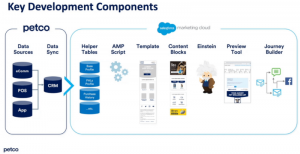Take a step back and reflect…
How often have you started a business venture or project but didn’t know when to stop developing the model or if the content you were generating was appropriate or sufficient?
As a content writer, I always serve my audience by providing insightful, actionable, and meaningful information. Knowing how, when, and what to produce when targeting an audience has become an integral part of my business model.
A problem occurred when I had to assess whether the time and energy I was putting into my model was being subsidized, either financially or in seeing my brand streamlined.
Was my investment being paid off, and how could I accurately evaluate if it was?
That’s when I developed specific and significant KPIs to continuously assess my model, which eventually became the bread and butter when keeping tasks on track and evaluating my success rate.
KPIs – Key Performance Indicators
Hold on! A new phrase – What does it mean?
By definition, KPIs are the measurable factors that show if your business model is effective and lucrative. By understanding what factors made my model more successful, I spent time assessing and evaluating its growth or stagnation.
But how do you know which KPIs are meaningful and measurable?
Here’s a trade secret, every business is different, and all models are built with different expectations; however, the underlying KPIs that gauge positive performance are shared.
From my experience, KPIs have given me a tangible and scalable measurement of my content writing business model, which doesn’t always mean PROFIT – but instead progress.
Here are 5 KPIs that help me evaluate myself as a writer. And they go in a sequence.
1. Rankings on SERPs
A strategy that resulted in higher SERP rankings was using SEO-friendly keywords to achieve a better ranking on Google.
This means that I studied the keywords that people frequently used to research topics and trends and optimized my content accordingly.
How does this connect to a measurable KPI, you might ask?
Success = Articles Ranking / Articles Written
The articles I wrote were designed so that Google could crawl them and rank them as valid.
They were resulting in more traffic because more people found my content suitable for their search.
Through cleverly placed keywords, I noticed a vast improvement in my ranking on Google, making these articles more accessible and serviceable to the public.
When my content had a higher ranking, I understood that the keywords used were appropriate.
2. Traffic channeled to the website
Everything about the content marketing world is related to the amount of traffic a piece can spawn. Without traffic, I cannot determine how effective or meaningful my content is.
How does this connect to a measurable KPI?
Success = Traffic Generated / Total Search Volume
When measuring traffic as a KPI, it is necessary to identify how much time a visitor spends on a page and how many visitors or clicks the article accumulates.
If a visitor spends a long time on my article, I know they are retaining the information shared. By measuring how long, on average, a visitor spends on my page, I can determine how valuable the information is.
The number of visitors on a page can also vary. The more visitors I have, the more ‘clicks’ I know my article is receiving, but this doesn’t always mean that the visitors are reading and retaining the information.
It does, however, mean that my content is being shared across a broader audience, and traffic is increasing.
By watching traffic trends on my articles and pages, I have identified the content that is failing at communicating the right message.
This has been a steep learning curve about what is attractive to my audience and what I should burn.
Protip: There is always a difference when marketing to B2B Vs B2C.
A constant need for creativity, reflection, and improvement is required when provoking more traffic to your pages.
It is fundamental to measure the growth of your model by assessing interest and traffic. It is also necessary to resolve matters that deflect or interfere with the engagement of your material.
3. Leads Generated Per Capita Traffic
A key focus of content marketing is acquiring potential customers and converting them into paying customers.
I have done this through lead generation, where I generated thought-provoking and meaningful information for my audience.
In doing so, there has been an increase in potential clients who I spent time with, cultivating and nurturing their interests, so they convert into paying customers.
How does this connect to a measurable KPI, you might ask?
Success = Leads Generated and/or Leads Converted / Total Traffic on a Website.
Content marketing has been on the uprising, and over time, as information became more accessible and somewhat less unique, marketers needed to create more conspicuous content.
This has allowed potential customers to easily follow specific marketer trends as the content generated belonged to more specific niches.
Content marketers, on the other hand, have spent more time refining their strategy to appeal to the right audience, making it easier to drive profitable customer action.
Both lead generation and conversion strategies rely on potential customer interest, which boosts your brand.
The content being published should increase the amount of paying customers, converting them into profitable business ventures or, at the very least, a frequenter of your portfolio.
After composing any content and then publishing it, I always keep a close eye on how many leads I generate from said article.
Protip: Invest some time in managing your digital assets since you need data at your disposal to measure your performance.
By measuring interest and conversions, I determine if my content is reaching the right audience and sharing the correct information.
If the content is optimized and suits the audience, fostering potential customers who demonstrate an interest in my model is more accessible, and conversions become more frequent.
4. Interactions that Recognize Reader Behavior
Like…
Follow, Subscribe…
Comment and Share!!!
With the plethora of content marketers available to us, everyone is reaching for exposure.
The all too familiar echoing of interactions with the public almost sounds like a notification bell going off in my mind.
Awaiting notifications of a ‘thumbs-up’ or repost can sometimes have me sitting on the edge of my seat even though I am aware that these interactions are considered more of a ‘vainglory’ metric.
But the value of an effective KPI is based on ‘performance,’ which can be measured through interactions across all social media platforms.
How is it connected to a measurable KPI?
Success = Visitors Recognizing your Efforts / Total Visitors.
When your content is appraised by the virtual public, it is a helpful indication that the value of your work is being communicated and is well received.
Content marketers want to make an impact on the public by delivering information that sparks interest and conversation.
I have measured the impact I am making by paying attention to how many likes, the nature of comments, and the number of times an article is reposted or shared on all platforms.
You might need to look into enhancing the user experience on your website, so people are more than excited to share their observations.
When I generate high interaction, then I know I am achieving an effective KPI; however, if the interactions are low, then I am aware that I need to spend more time refining my content and appealing to my audience using other tactics.
Protip: Your KPI measurements could go wrong if you have insufficient data. Hence, always ask yourself, is the data any good?
5. Collaborators Gained Per Piece.
Network, network, network…
In a world where content creation has become so vast, reaching out to other content marketers and industry experts have become necessary.
Collaboration in content marketing can drive your content further to reach a broader audience.
How does this connect to a measurable KPI?
Success = New Contacts Built / Total Work Published.
A stamp of approval, advice from here or there, or even a snippet of expertise can go very far when measuring the success of your article.
I have spent a copious amount of time on outreach and relationship building in this industry to know that a collaborator is a helping hand in marketing.
Alternatively, you can look at brands with expertise in growth partnering.
When collaborators contact me to share my articles or borrow a nibble of expertise, and vice versa, I determine that interest in what I produce appeals to the right audience.
When you have a significant amount of work out there, each piece uniquely doing its magic, you need to look into portfolio management to keep track of every aspect of every article/page.
Final Comments
Focusing on KPIs’ in your business model assists in making your plan actionable and purposeful.
Without the necessary measurements, it is almost impossible to determine success.
By relentlessly refining content and appealing to the interests of the target audience within my niche, I have established vital metrics (KPIs’) that continuously and consistently promote my business.
Without assessing and evaluating collaboration, ranking, traffic, interactions, and leads in content marketing, operations and service might fail.
Any or all content creators should continuously engage, reflect and refine their content using measurable indicators that determine quality, satisfaction and success.
Digital & Social Articles on Business 2 Community
(30)






